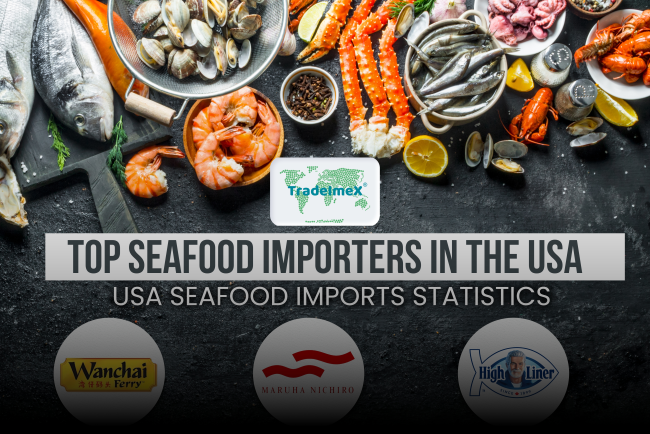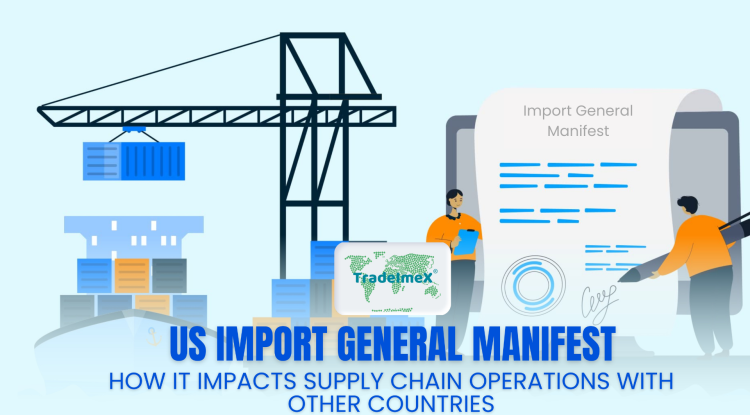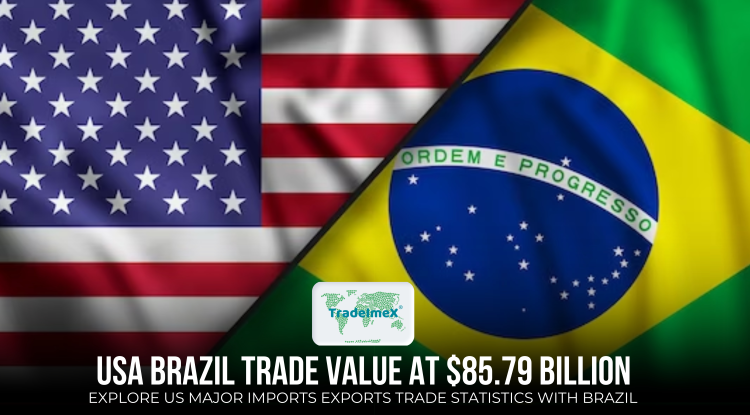US Import General Manifest: How It Impacts Supply Chain Operations with Other Countries
Discover how US imports are regulated with the US Import General Manifest and its impact on supply chain operations with other countries. Gain valuable insights on US IGM, as the US imports totaled $3.17 trillion in 2023.
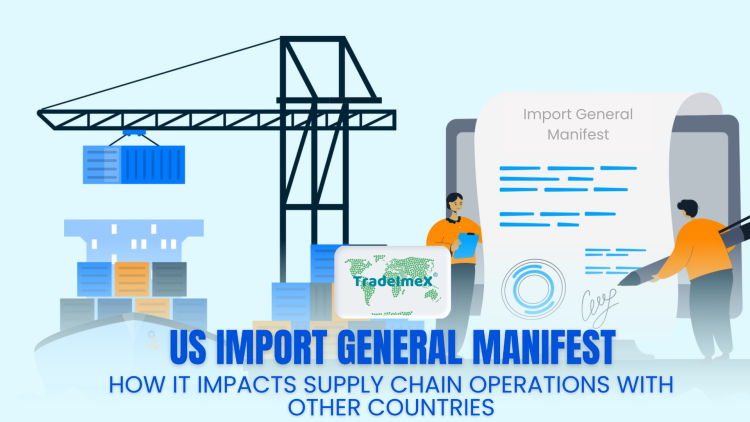
One of the key components of supply chain management is the US Import General Manifest, which plays a significant role in regulating and monitoring inbound shipments into the United States. As far as the US imports are concerned, the US imported goods worth $3.17 trillion in 2023 and $1.61 trillion in the first two quarters of 2024, according to the US Import General manifest and US trade bill of lading data. The Import General Manifest (IGM) is an essential document that facilitates cargo monitoring, customs clearance, and regulatory compliance, all of which contribute to the seamless movement of commodities across the global supply chain. The IGM contributes significantly to global trade by:
-
Logging information about shipments
The IGM is a thorough log of every shipment that reaches a port of destination. Details on the items being imported, including their description, weight, amount, and value, are included.
-
Processing of Customs
The IGM aids with the tracking of products entering a nation by customs authorities. The data in the IGM is used by customs officers to determine customs charges and evaluate possible risks.
-
Trade Statistics
The information gathered from the IGM is used by governments to create economic policies, monitor import trends, and generate trade statistics.
-
Verification of Arrival
The consignment has reached its destination safely, according to the IGM's confirmation.
Carriers and their agents can help ensure that products are moved smoothly by following guidelines and filing correct and timely IGMs. But how does it impact supply chain operations with other countries? Let's delve into the details of the US Import General Manifest, focusing on US shipment data and US import trade trends in 2023.
What is the US Import General Manifest?
A US Import General Manifest is a critical document required for all shipments arriving in the United States from foreign countries. It serves as a comprehensive record of the cargo being imported, providing detailed information about the goods, their origin, and their intended destination. The primary purpose of the Import General Manifest is to facilitate the clearance process for imported goods through US Customs and Border Protection (CBP). It ensures compliance with import regulations, enables the calculation of applicable duties and taxes, and supports risk assessment and security screening measures. Legally, all carriers (air, ocean, rail, or truck) are required to submit an Import General Manifest to CBP before the arrival of their shipments. Failure to provide accurate and complete manifest data can result in significant penalties, delays, or even the seizure of cargo.
Key components of a US Import General Manifest typically include:
1. Shipment Details: Information about the mode of transportation, carrier, vessel/flight details, and estimated arrival date.
2. Consignee and Shipper Information: Names, addresses, and contact details of the importer (consignee) and exporter (shipper).
3. Cargo Description: Detailed descriptions of the goods being imported, including their harmonized tariff codes, quantities, weights, and values.
4. Country of Origin: The country where the goods were manufactured or produced.
5. Container and Seal Numbers: Identification numbers for containers and seals used for securing the cargo.
6. Hazardous Materials Information: Declarations and descriptions of any hazardous or regulated materials being imported.
The Import General Manifest serves as a crucial document for supply chain operations, enabling efficient clearance, accurate duty calculations, and effective risk management for imports into the United States.
Top Imports of the US and their Impact on the US Import General Manifest
The United States boasts a diverse range of top imports that significantly shape the US Import General Manifest. Imports like electronics, machinery, and vehicles play a crucial role in contributing to the nation's economic landscape. The high volume of these imports not only impacts the manifest by influencing trade balances and customs regulations but also reflects the nation's consumption patterns and market demands. The top 10 US imports in 2023 according to the US import data and US import statistics:
1. Electrical machinery and equipment (HS code 85): $463.36 billion (14.61%)
2. Nuclear reactors and machinery (HS code 84): $459.19 billion (14.47%)
3. Vehicles (HS code 87): $381.03 billion (12.01%)
4. Mineral fuels and oils (HS code 27): $266.59 billion (8.4%)
5. Pharmaceutical products (HS code 30): $177.84 billion (5.61%)
6. Commodities not elsewhere specified (HS code 99): $124.97 billion (3.94%)
7. Optical, medical, or surgical instruments (HS code 90): $118.32 billion (3.73%)
8. Precious stones and metals, pearls (HS code 71): $89.54 billion (2.82%)
9. Plastics and articles thereof (HS code 39): $72.34 billion (2.28%)
10. Furniture; bedding, and mattresses (HS code 94): $69.00 billion (2.18%)
US Import Data in the last 10 Years
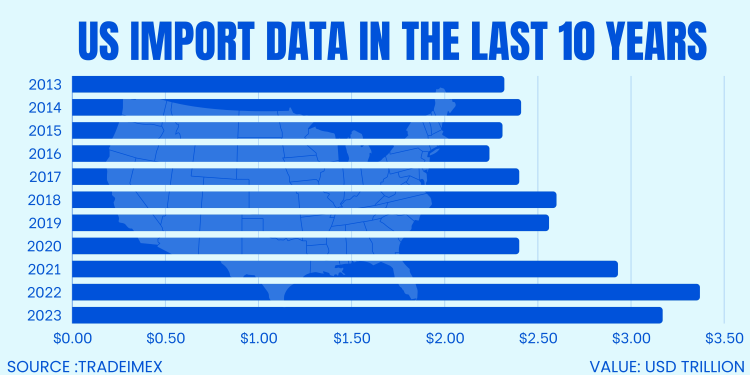
|
Year of Imports |
Total US Imports ($) in trillion |
|
2013 |
$2.32 trillion |
|
2014 |
$2.41 trillion |
|
2015 |
$2.31 trillion |
|
2016 |
$2.24 trillion |
|
2017 |
$2.40 trillion |
|
2018 |
$2.60 trillion |
|
2019 |
$2.56 trillion |
|
2020 |
$2.40 trillion |
|
2021 |
$2.93 trillion |
|
2022 |
$3.37 trillion |
|
2023 |
$3.17 trillion |
|
2024 (first six months) |
$1.61 trillion |
Importance of US Import Manifests or IGMs in Supply Chain Operations
The US Import manifests play a crucial role in facilitating smooth and efficient supply chain operations across international borders. These documents serve as a comprehensive record of all goods being imported into a country, providing essential information for various stakeholders involved in the process. One of the primary importance of import manifests lies in their ability to facilitate customs clearance. By providing detailed descriptions of the goods, their quantities, values, and origins, customs authorities can quickly assess and process shipments, minimizing delays and bottlenecks at ports of entry.
Moreover, import manifests aid in logistics planning and coordination. Compliance with trade regulations is another critical aspect where import manifests play a vital role. These documents serve as legal records, ensuring that all imported goods comply with applicable laws, tariffs, and trade agreements.
Impact of US Import General Manifest on Supply Chain Visibility
Import manifest data plays a crucial role in enhancing supply chain visibility, enabling companies to track shipments, forecast demand accurately, and optimize inventory levels. The US IGM has a huge impact on the supply chain operations such as:
-
By leveraging the detailed information contained in these manifests, businesses can gain real-time insights into the movement of their goods across international borders.
-
One of the primary benefits of import manifest data is the ability to track shipments from origin to destination.
-
Companies can monitor the progress of their cargo at every step, including departure from the source country, transit through various ports or airports, and arrival at the final destination.
-
Furthermore, import manifest data provides valuable insights into historical trade patterns and trends, enabling businesses to forecast demand more accurately.
-
By analyzing past import volumes, seasonality, and market dynamics, companies can make informed decisions about production planning, inventory management, and resource allocation.
-
Another critical aspect of supply chain visibility facilitated by import manifest data is the identification of potential restrictions.
-
By monitoring the flow of goods and analyzing data points such as dwell times at ports or customs clearance delays, companies can pinpoint areas of concern and take proactive measures to address them.
-
Finally, import manifest data plays a vital role in optimizing inventory levels across the supply chain. By combining real-time shipment tracking with demand forecasting, businesses can align their inventory levels with actual customer demand.
Trade Compliance and Risk Management
The US Import General Manifest plays a crucial role in ensuring trade compliance and mitigating various risks associated with international supply chain operations. Regulatory bodies, such as the US Customs and Border Protection (CBP), require importers to submit accurate and complete manifest data to facilitate the clearance of goods and enforce trade laws and regulations. Import manifest data also plays a vital role in identifying potential risks related to security, sanctions, and other trade-related concerns.
Furthermore, import manifest for US Import data enables proactive risk management by allowing companies to anticipate potential issues and take preventive measures. For example, by analyzing historical data and identifying patterns or trends, companies can better plan for potential disruptions, adjust inventory levels, or explore alternative sourcing options. Overall, leveraging import manifest data is essential for maintaining trade compliance, identifying and mitigating risks, and enabling proactive measures to streamline supply chain operations and ensure the smooth flow of goods across borders.
Analyzing US Import Trends and Patterns
The US Import General Manifest data provides a wealth of information that can be leveraged to analyze import trends and patterns. By monitoring import volumes over time, companies can gain insights into market demand, seasonal fluctuations, and overall economic conditions. This data can be segmented by product category, country of origin, or other relevant factors to identify specific areas of growth or decline.
One crucial aspect of analyzing import trends is identifying top trading partners. By examining the volume and value of imports from different countries, businesses can prioritize their sourcing strategies and supplier relationships. This information can also inform negotiations for trade agreements and tariff policies, as well as highlight potential risks or opportunities associated with specific regions.
Best Practices for Leveraging Import Manifest Data
Effective utilization of import manifest data requires a strategic approach to data governance, analytics, process automation, and cross-functional collaboration. Some of the best practices to leverage US Import Manifest Data are:
-
Data Governance
To guarantee data security, accuracy, and consistency, clearly define your data governance policies and processes.
-
Analytics Tools
Invest in robust analytics tools and platforms that can handle large volumes of US import manifest data.
-
Process Automation
Automate manual processes related to import manifest data management, such as data extraction, transformation, and loading.
-
Collaboration Across Functions
Foster collaboration between various functions, including logistics, customs compliance, procurement, and finance.
Conclusion
In conclusion, the US Import General Manifest plays a crucial role in regulating and monitoring inbound shipments into the United States and maintaining the US shipment data. By providing detailed information about their goods in advance, importers can enhance transparency, visibility, and security in the supply chain, thus ensuring the smooth flow of goods from other countries. Compliance with this regulation is essential for importers to avoid penalties and streamline their operations effectively.
What's Your Reaction?









